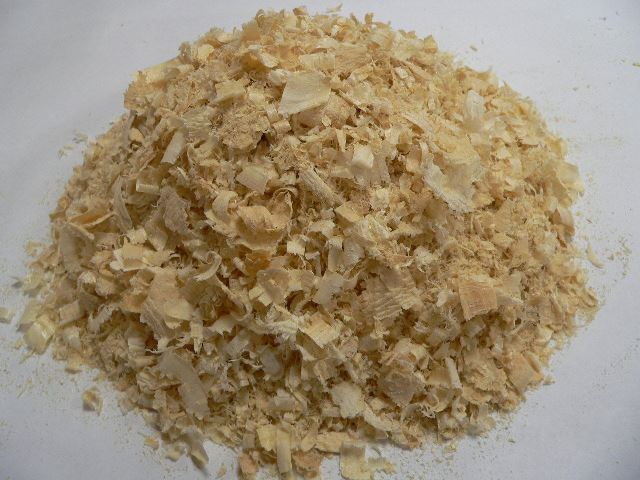Inexpensive and affordable natural material - sawdust. They can be purchased at the nearest sawmill, obtained at their own site during construction, sawing firewood. Farmers have found many ways to benefit from this waste. But do not forget that they can be harmful. Further in the article let's take a closer look at aspects such as the benefits and harms of using sawdust in the garden. As well as how to fertilize or treat the beds.
Table of contents
- Scope of use of sawdust in the country or garden
- Varieties of small wood waste
- Benefit and harm
- Mulch
- How can compost be fertilized
- Bookmark in soil and greenhouses
- Neutralizer of harmful substances
- Podkiditel on beds in a garden
- Pine sawdust as a dehumidifier
- Temperature Insulator
- Pest Repeller in the garden
- Additive to seed soils
- Use of the substrate as fertilizer
- Environment for winter storage of rhizomes and tubers
Scope of use of sawdust in the country or garden
Sawdust and shavings are sometimes burned, receiving mineral fertilizer - wood ash. But this is how valuable organic matter disappears, the bulk loose substance disappears. More profitable to do differently:
- Mulching.
- Compost.
- Bookmark in the soil and greenhouses.
- Neutralizer of harmful substances.
- Acidifier
- Desiccant.
- Temperature insulator.
- Pest repeller.
- Additive to seedling soils.
- Substrate for mycelium, germination of seeds and tubers, forcing flowers and greenery.
- Environment for winter storage of rhizomes and tubers.
- Covering garden paths.
- Litter in livestock and poultry, in a dog kennel.
- A filler in a country toilet.
- Material for stuffing garden scarecrow, garden furniture and pillows.
- Building materials (insulator, insulation, filler for opilkobetona).
- Fuel in boilers.
- The source of smoke in the smokehouse.
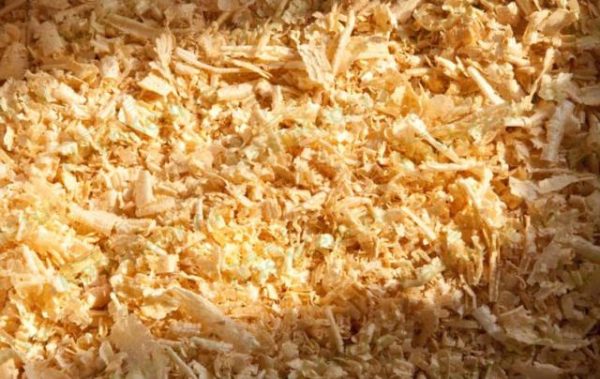
Varieties of small wood waste
Small waste from sawing wood is divided into chips, large and small fractions. Differences are also available by type of wood: from coniferous or hardwood. Sometimes differences are important, for example: deciduous waste rot faster; conifers are not suitable for smoking products, etc. But the value is any organic. Before use, it is desirable to process sawdust.
Benefit and harm
- For humans and the environment is dangerous the presence of such impurities as creolin, chemical oils, paint particles, glue, gasoline. That is why it is necessary to take the products of processing of pure wood, and not chipboard or sleepers.
- Resin substances inhibit seed germination and plant development. This deficiency is neutralized by scalding the substrate with boiling water, as well as during composting.
- Intact organic matter (when introduced into the soil and on its surface) begins to decompose by microorganisms, which heavily consume soil nitrogen. Because of this, plants are starved for nitrogen - they turn pale, they develop worse. Therefore, it is recommended to put only rotten sawdust into the ground, and when mulching with fresh, spice it with nitrogen fertilizer.
- Sawdust compost acidifies the soil.Alkalinization is necessary simultaneously (in the fall - with lime, in the spring - with dolomite flour, ash).
- Rustic sawdust soil dries out too quickly. It is necessary to comply with the recommended proportions of the components, to monitor the regularity of watering.
Mulch
Sawdust mulch is a cheap and convenient option. She covers at the cottage:
- surface ridges with vegetables and strawberries
- soil in raspberry field, flower beds
- tree trunks in the fruit garden
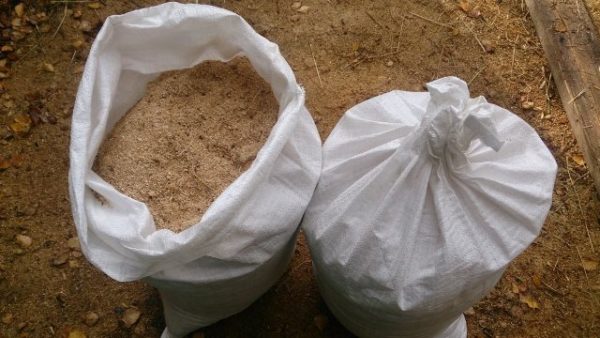
Layer thickness can be from 4 to 20 cm.
Mulch acceptable and fresh sawdust. They are pre-cooked: impregnated with a strong solution of nitrogen fertilizers. For this, 3 buckets of mulching material are poured with 10 liters of water, where a quarter of a kilogram of urea or saltpeter is dissolved. It is best if this mixture is allowed to stand for a couple of weeks before being mulched (covered with polyethylene), after which it can be poured over the beds.Mineral fertilizers can be replaced with fresh manure or manure (2 liters), but this mulch will not work with strawberries and some vegetables (for hygienic reasons).
Advantages of sawdust mulch
- the material is not littered with weed seeds
- gradually mulching enriches the soil with organic matter
- moisture is saved
- no soil crust and erosion
- roots are insulated, temperature drops are smoothed
- comfortable to useful soil inhabitants (microorganisms, earthworms)
- it is difficult for some pests
- there is no dirty spray in rain and watering - cleaner products and fewer diseases
- weed growth inhibited
- ridges, garden, flower beds look well-groomed and beautiful
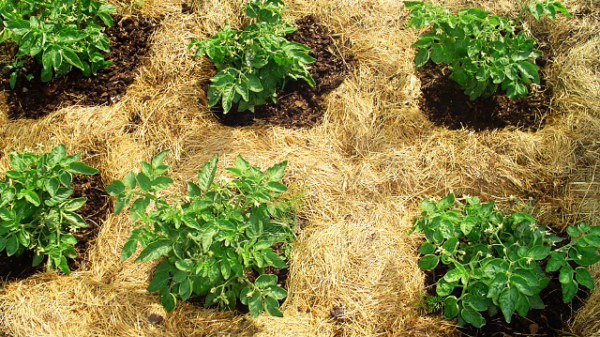
How can compost be fertilized
The best option for disposal of sawdust - competent composting. Just poured in a big pile, they will be spent several years (especially from coniferous trees). Rot is accelerated by layer-by-layer mixing with substances such as
- dung
- feces
- peat
- foliage
- grass humus
- dolomite flour, ash.
The mass is regularly shoveled and shed with water, as well as with solutions of mineral fertilizers, herbal infusions,biopreparations (Baikal, Florumb Super, Radiance). The process of maturation of compost usually lasts from six months to two or three years. The minimum waiting period is 2 months.
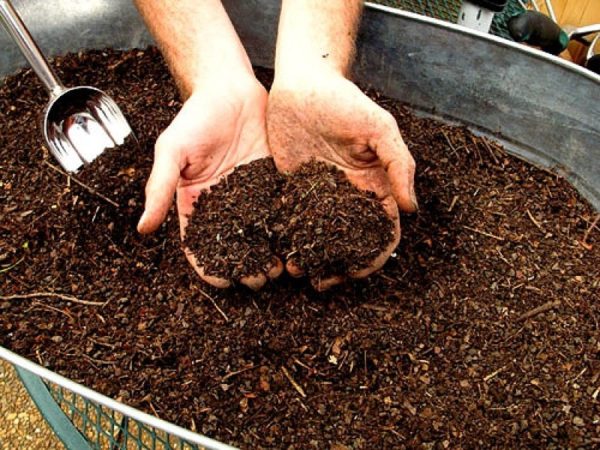
Bookmark in soil and greenhouses
Sawdust compost is recommended to be applied to the soil for digging in the autumn (5-15 liters per 1 sq. Meter), after lime fertilizers. Well-rotted organic matter is used in the spring - they are put under digging, in holes and landing pits.
Small wood waste is also used when laying biofuels in greenhouses and greenhouses. They are mixed in: fresh sawdust to fresh manure, reflowed to rotted (in a 1: 1 ratio).
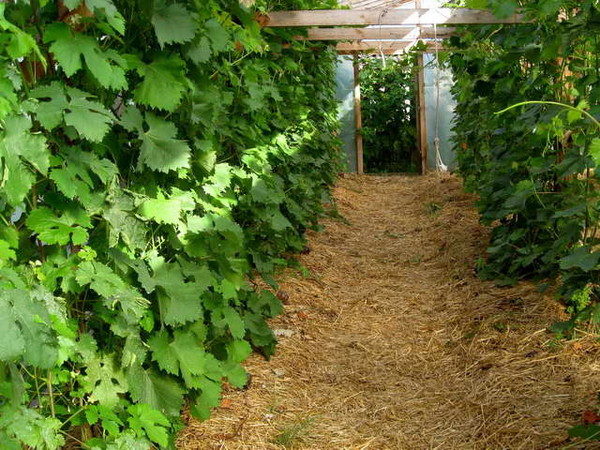
Neutralizer of harmful substances
A fresh mass of small wood waste serves as an ambulance in case of emergency. It is added to the ground if there is an oversupply of nitrogen and other fertilizers. So the plants will avoid fattening, accumulation of nitrates and harmful salts.
Podkiditel on beds in a garden
Fresh sawdust is useful for planting and mulching of those plants that love the increased acidity of the soil (hydrangeas, rhododendrons, azaleas, heathers, blueberries).
Pine sawdust as a dehumidifier
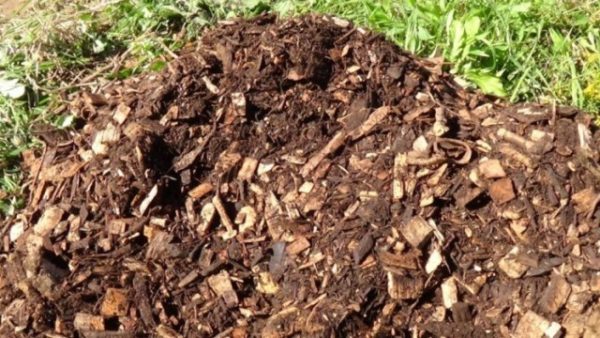
Fresh sawdust can absorb the amount of liquid that is 5 times larger than their volume. They are good to fill drainage ditches, paths between high ridges in the marshy areas.
Temperature Insulator
In regions where there are low temperatures in winter, with dry sawdust, the root zone and branches of bushes (grapes, hydrangea, rose, clematis), planting of winter garlic and perennial flowers (lilies, irises, chrysanthemums) are covered from freezing. To avoid podpryvaniya, shelter produced when the onset of freezing temperatures, and the disclosure - in the spring early. To protect against moisture, a waterproof material is placed on top (polyethylene, roofing felt, etc.).
Some fruit crops bloom very early, and the ovaries freeze slightly. If the root zone is filled with a powerful sawdust layer, the trees and shrubs will wake up later. Bloom will move away to a more comfortable time.
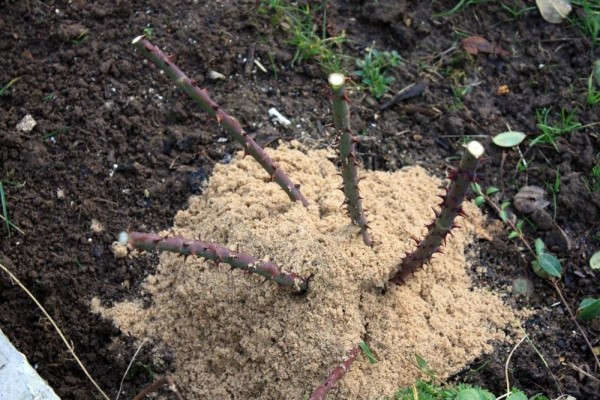
Pest Repeller in the garden
Small wood waste is impregnated with tar or gasoline, laid out to scare away rodents, onion and carrot flies.
Adding spiny sawdust makes it difficult to move snails and slugs. The resinous aroma partially protects plants from the attack of beetles (Colorado, raspberry, flower beetle, weevil).
Additive to seed soils
A soil substrate containing from 10 to 50% refrained sawdust compost is recommended for
- seedlings of vegetable and flower crops
- rooting cuttings and strawberry whiskers
- growing seedlings with a closed root system.
Other components of this soil are garden soil, peat, some sand. Loose soil requires frequent watering or special additives that retain moisture (hydrogel, vermiculite, coconut substrate).
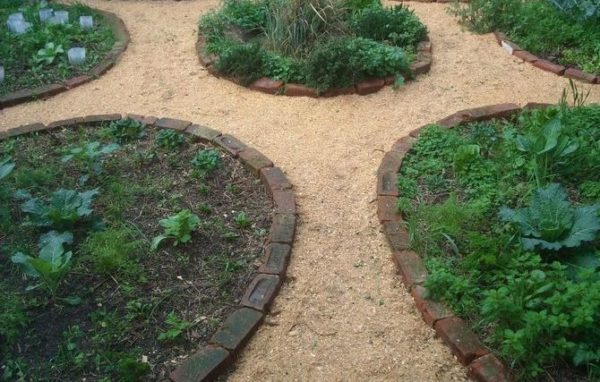
Use of the substrate as fertilizer
Cucumber seeds (as well as squash, pumpkins, melons and watermelons) are germinated in fresh small sawdust, holding seedlings. The substrate is poured boiling water, then the water is immediately drained.The procedure is repeated twice to wash away the resinous substances. The warm wet mass is laid out in a layer of 6 cm, and dry seeds are placed in it to a depth of 1.5 cm (with a distance of 3 cm from each other). Crops are covered with film and placed in a warm place. Shoots "shoot" after 3-4 days. Seedlings are ready for planting in two weeks.
In sawdust you can make the forcing of green onions, tulip flowers. Substrate must first be shed with boiling water, sprinkled with complex fertilizer with a predominance of nitrogen. Similarly germinated before planting tubers of potatoes and dahlias.
The average fraction of the crushed wood of deciduous trees is used for artificial breeding of mushrooms such as oyster.
Environment for winter storage of rhizomes and tubers
In the fall, flower growers dig up dahlia tubers, callas and begonias, cannes rhizomes. They are stored in a cellar or a refrigerator, sprinkled with dry fresh sawdust. Resinous components inhibit rotting.
Farmers are zealous and creative people. They are able to convert waste into income, especially when it comes to organic.As you can see, the use of pine or any other sawdust can benefit in capable hands.
